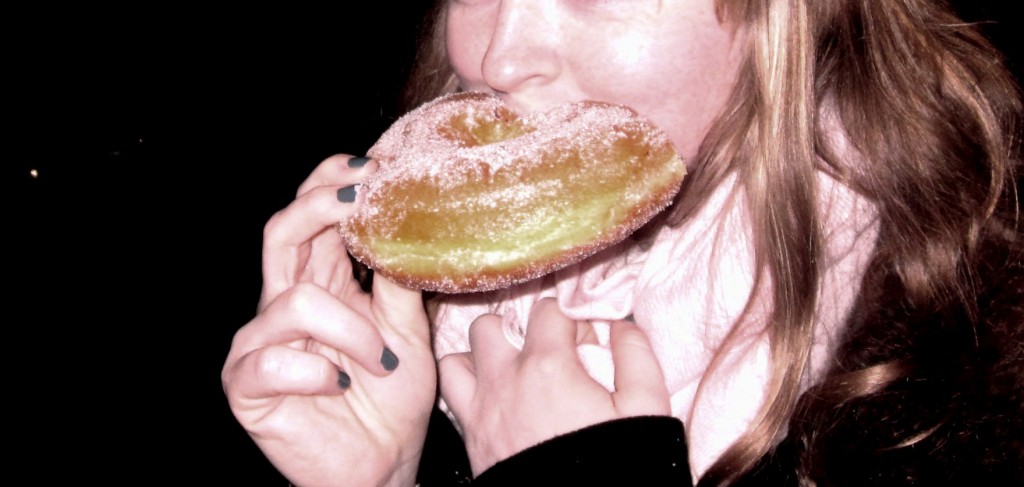
I saw the Sun, and it seemed to me I was seeing a glorious goddess; To Her I bowed for one last time in this world of Time.
– Song of the Sun, Edda poem Solarljod
New Year’s Eve is the threshold between our very recent past and our near future. December 31st is the bridge that links the darkest and longest day of Winter Solstice and the return of the sun. Our choices, our character and our past will lead us to this time of reflection. The doorway into the New Year lies charged with all that we have experienced and learned, and breathes mighty with the possibilities of our wishes and dreams. It is here that we must stand thankful for all that has been, willing to let go and create space for the new, and remain open to what is yet to come. The shadow dance between dark and light is an ever-vigilant presence and yet is especially brutal and breathtaking as it settles in for the winter months in Norway. This duality is the backdrop for the New Year’s Eve, where past and future collide in a burst of color.
Nowhere have I witnessed the magnitude, grace and beauty of the almost all-encompassing darkness to befall the days of winter as I have within the northern islands of Norway called Lofoten. The Lofoten islands rest within the Arctic Circle, and it is here that both the splendor and might of true night seeps steadily into the days, as sunlight is often only glimpsed for but an hour or two, if any, and is robed in a few stray rays of grey light.
It is believed that earliest settlers of Lofoten can be traced back to over 11,000 years, and Norse mythology chants of the darkness that comes to blanket the region and the glimmers of light as it slowly begins its rebirth. Tourists from all over the world flock to Lofoten over the summer months to experience the great beauty of the archipelago and revel in awe-inspiring nature, but winter to me is the most enchanting experience. The battle waged between darkness and light, is eternal, for they are two halves of the same whole as they sustain one another, and to witness it within ourselves and see it reflected across the night sky is a majestic and humbling feat.
The pagans of Scandinavia saw the embodiment of the sun as an elfin sung goddess, who during the winter months is swallowed up by the darkness of the winter wolf. The Sami called her Beaivi Nieida meaning the “Sun Maiden” and it was believed that she was the source of all life. As her rays touched the earth, life was breathed into the fields and the wombs of all living things. When you find yourself enveloped in a darkness that seems to encompass both the day and night within itself, you will know how every shard of light must be preserved, remembered and renewed.
The Aurora Borealis have been written about, painted and beautifully photographed, but absolutely nothing can compare to actually being able to experience the night sky as it moves with majesty of colors we often reserve for pictures taken in space. This ever-shifting spectrum of color is named for the Roman goddess of the dawn, Aurora, and the Greek name for wind, Boreas. I love to photograph, but there are moments in time where memory has to be allowed to be the lone witness, and such is the case when viewing the Aurora Borealis. The hues of blues and greens glide across the star scattered sky with such grace, that you almost want to hold your breath, to freeze the moment in time, for even within the span of seconds the tapestry of the sky is eternally changing.
The first time I saw the Northern Lights, I lowered my camera and stood in perfect awe. I have always loved the night sky scattered with stars, and on a trip through the desert from California to Las Vegas, I remembered thinking that as long as I could look up at the sky and see stars, I would never feel lonely. Watching the ribbons of ethereal light cascade across the Norwegian skies, I am reminded of all the people I love and somehow, no matter how far across the world we may find ourselves, the connections remain ever strong.
According to Hermetic writings, Earth mirrors the great heavens and is best encased in the quote “ As above, so below”. Perhaps my absolute favorite tradition to observe both on Christmas and New Years in Norway is the lighting of candles upon all the graves. These are the shards of light and love that break through the darkness, just as the sun goddess breaks free from the belly of the wolf, and enters the cycle of rebirth anew. Facing the ocean and the winds with their might and ability to bring change, held close by the embrace of those we love both living and those who have passed, supported by the steadfastness of the earth and the mountains, we are reminded that we are beings of light, and the light will always find a way.
The glow of candles in the cemetery breathes softly and the night skies are clear, scattered with starlight and the light of the new dawn blown by the winds in shades of primordial blues and greens. We hold hands and firecrackers in our free hands, because the world is made of light bursting through the dark.

